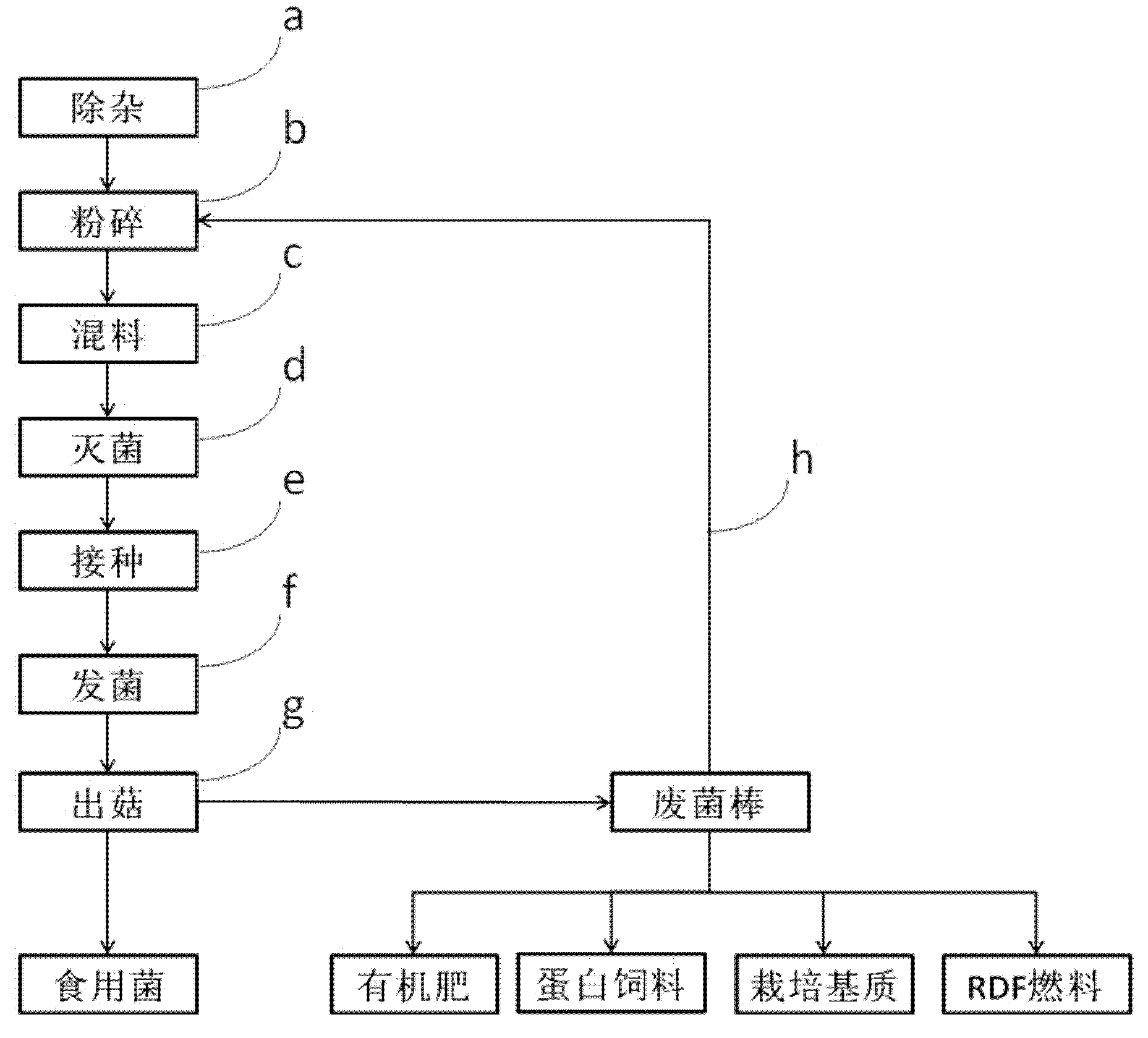How to deal with food waste
A technology of food waste and mixed materials, which is applied in the field of waste resource utilization, can solve the problems of high equipment requirements, soil salinization, poor safety, etc., and achieve high economic benefits, high fruiting rate, and low cost.
- Summary
- Abstract
- Description
- Claims
- Application Information
AI Technical Summary
Problems solved by technology
Method used
Image
Examples
Embodiment 1
[0051] This embodiment provides a method of using edible fungi to treat food waste, and to process food waste with edible fungus cultivation technology, such as figure 1 As shown, the method includes:
[0052] a. Impurity removal: pick out plastic bags, beverage bottles and other sundries in the kitchen waste, and remove the floating grease on the surface;
[0053] The impurity removal step in the above-mentioned step a specifically includes:
[0054] Pick out plastic bags, beverage bottles and other sundries in the kitchen waste, fish out the oil floating on the surface, and sell the oil to oil recycling companies after refining;
[0055] b. Crushing: send the cleaned kitchen waste and sawdust to the pulverizer for pulverization, and pass through a sieve with an aperture of 1 cm;
[0056] The crushing step in the above-mentioned step b specifically includes:
[0057] Send the cleaned kitchen waste into a wet grinder for crushing, wood chips are crushed with a dry grinder, ...
PUM
 Login to View More
Login to View More Abstract
Description
Claims
Application Information
 Login to View More
Login to View More - R&D
- Intellectual Property
- Life Sciences
- Materials
- Tech Scout
- Unparalleled Data Quality
- Higher Quality Content
- 60% Fewer Hallucinations
Browse by: Latest US Patents, China's latest patents, Technical Efficacy Thesaurus, Application Domain, Technology Topic, Popular Technical Reports.
© 2025 PatSnap. All rights reserved.Legal|Privacy policy|Modern Slavery Act Transparency Statement|Sitemap|About US| Contact US: help@patsnap.com


